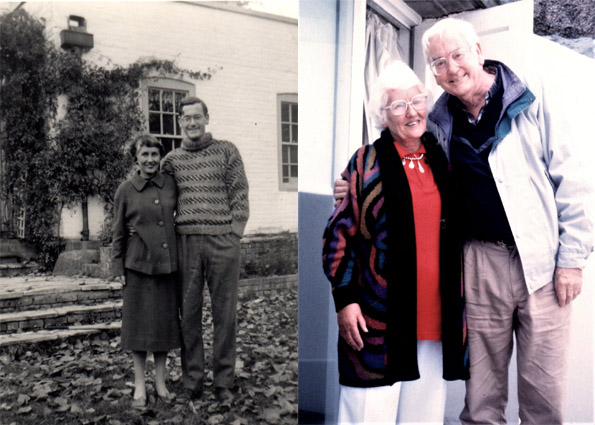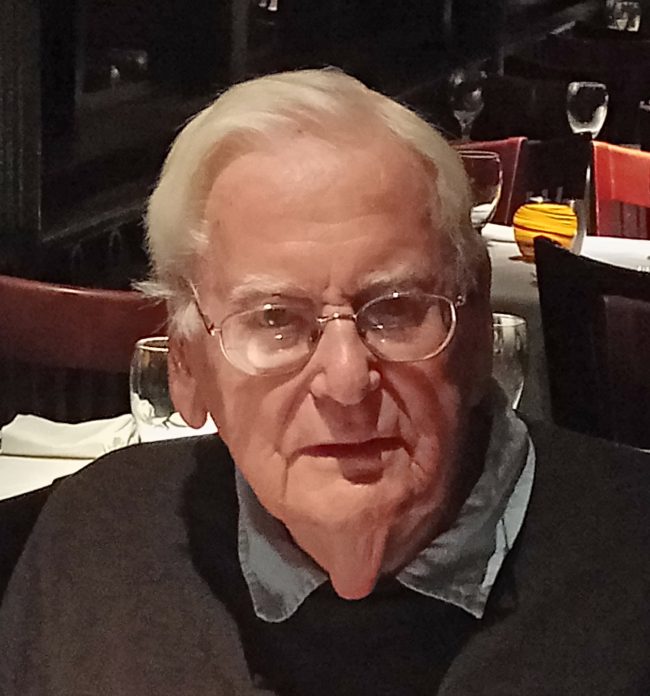David Lewis 1922 – 2020

In memory of David Lewis
Almost everything that has been and will be written about David Lewis focuses on his long, enormously successful career in America as an internationally noted architect, pioneer urban designer and Distinguished Professor at Carnegie Melon University, Pittsburgh. He was also an author, painter and latterly a successful sculptor.
However, the earlier, formative part of Lewis’s story concerns his years in the UK, where his engagement with the visual arts and architecture were established and grew. Born in South Africa, he arrived in the UK as an impecunious poet. Here he befriended and, for a time worked amongst many of the post-war generation of Modernist British artists – most particularly those who made the Cornish town of St Ives their home. It was in St Ives that he met Wilhelmina Barns-Graham, whom he married in 1949. Years later, an idea by Lewis was the catalyst for an exhibition which grew into the first major survey of the St Ives community of artists: St Ives: 1939-64, Tate Gallery, London, 1985. Lewis contributed, as an introduction to the catalogue, a personal memoir of his years there.
Arriving in St Ives in late 1947, as a young author Lewis rapidly became both an apologist for and supporter of, the group of young avant-garde painters and sculptors of which Willie was a member. Lewis enthusiastically immersed himself in contemporary European art history, as well as in the concerns of the British non-figurative artists, amongst whom he lived for a time. When, as the result of a Scholarship, Willie worked in Italy in 1955, he was by his wife’s side, accompanying her also on visits to the Parisian studios of senior modernist figures. As a result, Lewis wrote (sometimes the first to do so in English) about, among others, Constantin Brancusi and Piet Mondrian.
Having for some time been concerned to establish a career of his own, Lewis’s departure from St Ives in 1956 was ostensibly, a consequence of his decision to study architecture at Leeds – encouraged also by the opportunity to work with architect Peter Stead, on his plans for speculative modernist houses in Huddersfield. There had however, also been growing tensions within his and Willie’s relationship. Despite this, Willie joined Lewis in Leeds, teaching for a short time at the College of Art. Attempts to repair their growing rift were unsuccessful: they had by then established quite separate priorities. Willie returned to St Ives, whilst at the end of his studies Lewis, with Stead left for Pittsburgh.
Whilst both were deeply marked by their parting, in the years that followed Lewis and Barns-Graham led increasing fulfilling and celebrated lives. As the tide of art history turned and the legacy of the St Ives painters was reassessed by exhibition and most dramatically, the opening of Tate St Ives in 1993, Lewis and Barns-Graham became reconciled. Arguably, in response to the loss of her marriage, Willie created some of the most introspective and deeply meditative works of art, of her career.
David Lewis was a bon viveur, whose appetite for life was unbounded. He had a wonderful rich laugh that was infectious. Together with his wife Judi, he was immensely generous to both friends and visitors. David was a great storyteller, and like all good storytellers he would embellish and enlarge the narrative depending on his audience. He was, apparently, a much-loved teacher and engaging lecturer. As an architect and urban designer, he believed in imaginative renewal, through re-purposing of redundant buildings, and the creation of neighbourhoods of well-designed, quality housing. Urban Design Associates (UDA), which he co-founded in 1964 with fellow architect Raymond Gindroz, pioneered the engagement of citizens in the design of their communities. In this it reflected both his humanity and egalitarianism.
Lynne Green
David Lewis: writer, painter, architect, urban designer and University Professor died peacefully at his home in Pittsburgh, on 30th June.

David Lewis Pittsburgh 2018
